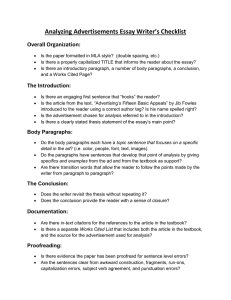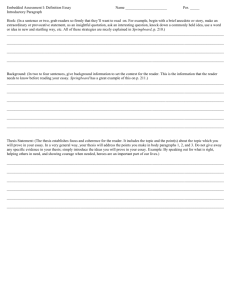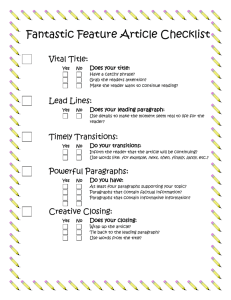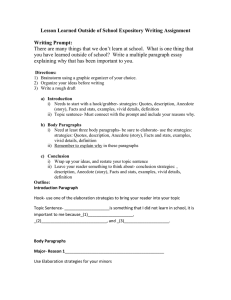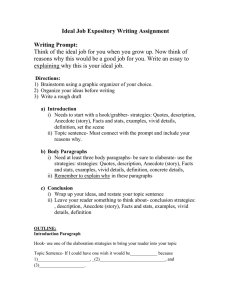Writing the Introduction and Conclusion
advertisement
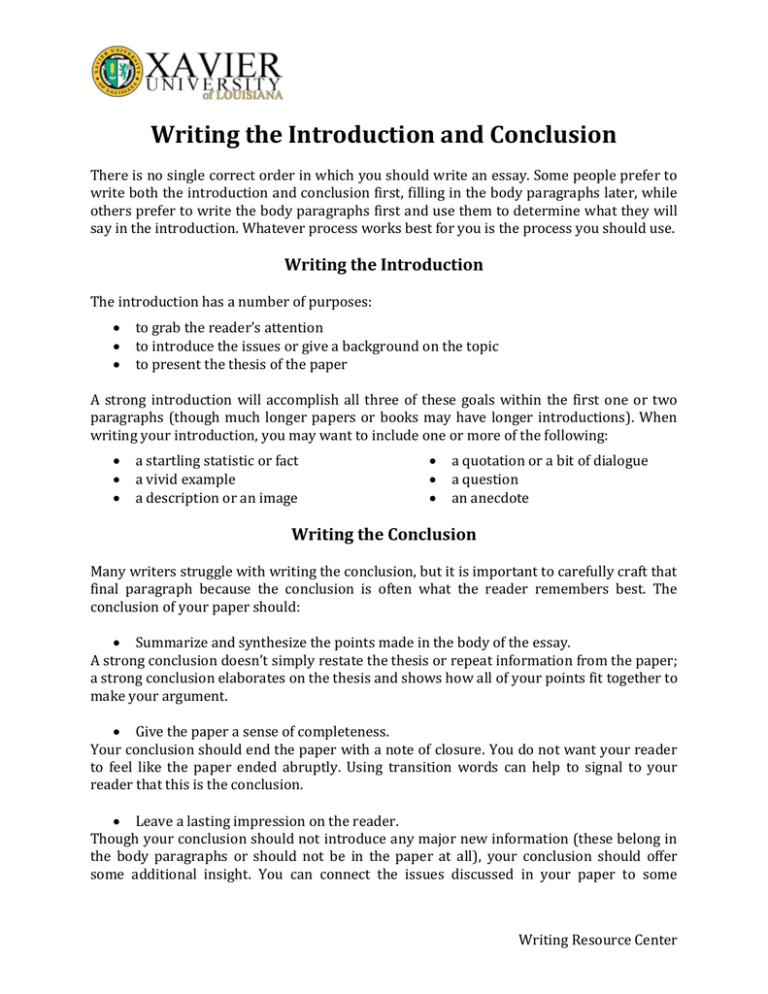
Writing the Introduction and Conclusion There is no single correct order in which you should write an essay. Some people prefer to write both the introduction and conclusion first, filling in the body paragraphs later, while others prefer to write the body paragraphs first and use them to determine what they will say in the introduction. Whatever process works best for you is the process you should use. Writing the Introduction The introduction has a number of purposes: to grab the reader’s attention to introduce the issues or give a background on the topic to present the thesis of the paper A strong introduction will accomplish all three of these goals within the first one or two paragraphs (though much longer papers or books may have longer introductions). When writing your introduction, you may want to include one or more of the following: a startling statistic or fact a vivid example a description or an image a quotation or a bit of dialogue a question an anecdote Writing the Conclusion Many writers struggle with writing the conclusion, but it is important to carefully craft that final paragraph because the conclusion is often what the reader remembers best. The conclusion of your paper should: Summarize and synthesize the points made in the body of the essay. A strong conclusion doesn’t simply restate the thesis or repeat information from the paper; a strong conclusion elaborates on the thesis and shows how all of your points fit together to make your argument. Give the paper a sense of completeness. Your conclusion should end the paper with a note of closure. You do not want your reader to feel like the paper ended abruptly. Using transition words can help to signal to your reader that this is the conclusion. Leave a lasting impression on the reader. Though your conclusion should not introduce any major new information (these belong in the body paragraphs or should not be in the paper at all), your conclusion should offer some additional insight. You can connect the issues discussed in your paper to some Writing Resource Center broader issue in the world, or speculate on the future implications. You want to instill in your reader the sense that your paper was important and meaningful. As with writing the introduction, you may want to incorporate one or more stylistic techniques to strengthen your conclusion. You may wish to include an anecdote, a final, meaningful quote, or even a “call to arms,” charging the readers with a duty they must carry out. Writing Resource Center


